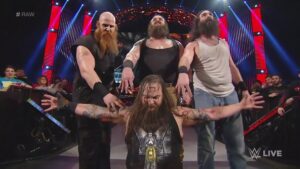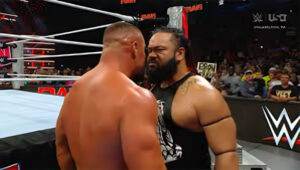The psychology of wrestling music is one we see every day, but not often do we take notice of its impact on us. In the 1890s, Soviet neurologist Ivan Pavlov discovered “classic conditioning.” His studies were peculiar but shaped much of what we know of the principles of behavioral psychology.
Pavlov and Classical Conditioning
Testing dogs on his theories, he found that certain sounds would elicit a response from his canine friends. Responses were elicited through buzzers, metronomes, footsteps, and bells. After each of these sounds, he’d give the dogs a treat.
Through behavioral patterns and environmental stimuli, he discovered that dogs visibly anticipated the arrival of food, drooling at the prospect. With this in mind, he theorized that this was inherent in most living things, including humans.
For instance, when you were a child and the last bell rang at school, it was time to go home. When you hear a siren outside, you respond, understanding that bad weather is entering your area.
In Simply Psychology’s article on Pavlov, “Pavlov’s Dogs Experiment and Pavlovian Conditioning Response“, Editor-in-Chief and psychology teacher Saul McLeod, PhD mentions that these are learned behaviors stemming from associations to different stimuli. The more that living things are familiar with certain stimuli, the more casually they react through conditioning.
Through familiarity, these interactions become second nature. In the unconscious, living things exist with what has become a part of life.
How Classical Conditioning Applies to Wrestling
From the moment the first and final bells ring, the bodies slam on the mat, the chairs thwack, the crowd chants and the building anticipation leads to a finishing move, fans move to the melody of wrestling. Performance and athleticism are but another part of the understanding of psychology needed to make fans believe in their stories, no matter how unreal.
What I want to talk about, however, is the way music pulls us. A small part of a match, segment, or promo, music sets the stage for what’s to come.
Origins
Tracing back entrance themes in wrestling, one must go far back. I mean, far, far back. Past the memorable melodies of Jim Johnston or the Von Erichs using hit songs by Rush, Tanya Tucker, and more, this is nothing new.
Late 1900s
Argentinian promotion Titanes en el Ring did as much in the early 1970s, sporting themes for the wrestlers in its roster. Audiences in attendance grew comfortable knowing who was entering due to the songs they used. That’s when it became the norm.
Before then, however, it wasn’t as commonplace. Yes, some would have a song play them to the ring, but it was few and far between, with one figure among all the rest standing out.
Early 1900s
As far back as the late 40s or early 50s, Gorgeous George sauntered cockily to the ring. Pompous and arrogant, he utilized this tune to irk the fans in attendance as though to say he was better than them. Better than everybody.
While fans attribute the song “Pomp and Circumstance” to the iconic Randy Savage in the public zeitgeist concerning wrestling. But its involvement in the squared circle predates him by a large margin.
And yet, as Jeff Frantom of Pro Wrestling Stories wrote in his piece, “Secret History of Entrance Music in Wrestling“, George wasn’t the only one. Around the same time, Mildred Burke had been using music, and earlier than her, Lord Patrick Lansdowne’s British aristocratic character entered squared circles to the tune of “God Save the King” to draw the ire of American audiences.
Fun fact, he actually came from Ohio and we were lied to. We can’t even trust pro wrestling now.
Once promoters understood how music connects with fans, this now-crucial aspect of the medium became a big deal. Understanding that this aspect adds layers and context to the wrestlers in the ring, this facet allowed for a deeper bond between viewer and performer.
From WWE to WCW to the indies to AEW, the power of music works in sync with talent, and it does so in various ways.
The Entrance Pop
Glass shattering. A coin landing on a flip. The swell of “Rise of the Valkyries.”
These are sounds that are instantly recognizable and bring the fans to their feet. They are who the fans came to see.
This is the salivator of fans. That heart-stopping, pulse-pounding thrill that informs that fans are now occupying the same space as a wrestler they adore.
Through charisma, aura, skill, and connection, the entrance pop is the chief indicator that the ensuing action and violence will be a collective cathartic joy. What I find interesting about this is the reaction of fans in arenas is the collective unconscious of it all; fans react once they see everyone else reacting – I’ve seen this in effect on clueless fans personally.
Of course, the inverse of this is also true: Chris Jericho shouting “I…am the learning tree! 😃” sees fans groaning, booing, or turning the channel. When acts don’t resonate with viewers and fans, the response is usually already negative. Try as one might to work around or with it, it is still “go away heat.”
Whichever one of these sounds or melodies rings out through buildings, the fans should react. They should. Sometimes that isn’t the case.
Cut My Music
When AEW Collision first aired under CM Punk’s guidance, something subtly noticeable took place. Themes played as usual when wrestlers had their scheduled matches but, when a talent made an unexpected run-in, to no fanfare.
Surprise!
While CM Punk may be a tiny bit controversial (just a wee bit), my hot take is that I agree with him on this. It’s organic and natural, fitting in with the realism of wrestling. And yet, it betrays what I said about the magic of an entrance pop when a debut or return occurs.
For some, the suspension of disbelief and the camp of wrestling is at its best here. While I’m not a fan of moments such as these, I’m sure someone is a fan of it. It’s campy, and people like camp.
However, there’s another element of an absence of music accompanying a talent to the ring, and that’s when the story calls for it.
Subverting The Norm
The best (and so far only) example I can think of was Tomasso Ciampa’s memorable entrance during NXT Takeover: New Orleans in 2018 when he entered only to a chorus of boos. For context, Ciampa built a tag team relationship with beloved NXT babyface Johnny Gargano as part of DIY. Since 2015, the pair had a chemistry that resonated with audiences.
In 2018, when Ciampa grew tired of this alliance, he violently assaulted Gargano, breaking his and everyone else’s hearts. This gave way to one of the brand’s most gripping storylines in the early half of its story.
Ciampa then made the genius choice to enter with no music. No licensed songs, nothing from CFO$, nothing. His theme song was the disdain of New Orleans.
How bold— how confident do you have to be to use the audience’s hate as fanfare? Wielding broken trust and pure spite as an anthem, swaggering to the ring without a care. Your sobbing is my theme song.
Ciampa became the antithesis of Gorgeous George and Lord Patrick Lansdowne.
To Be Continued…
Akin to concerts, reacting to music with wrestling crowds creates a unique atmosphere, targeting a side of music’s connection on a level of public consciousness. But there’s more. There’s still much to discuss about how music and wrestling coincide psychologically and emotionally: licensed music, nostalgia, wrestlers singing their own songs, and storytelling.
Until then, put on some headphones, start up your favorite playlist, and let yourself drift away.
More WWE From LWOS Pro Wrestling
Header photo – WWE – Stay tuned to the Last Word on Pro Wrestling for more on this and other stories from around the world of wrestling, as they develop. You can always count on LWOPW to be on top of the major news in the wrestling world, as well as to provide you with analysis, previews, videos, interviews, and editorials on the wrestling world. You can check out an almost unlimited array of WWE content on the WWE Network and Peacock.






